Muriwai, also known as Muriwai Beach, is a coastal community on the west coast of the Auckland Region in New Zealand's North Island. For Aucklanders, the black-sand surf beach and surrounding area are popular recreational areas. The Muriwai Regional Park contains a large gannet colony's nesting site. Muriwai's name is translated as 'water's end' by the New Zealand Ministry of Culture and Heritage.
The Muriwai area is traditionally part of the Tamaki Mori tribe Te Kawerau Maki rohe, known initially as One Rangatira ('The Chiefly Beach'), referring to the visit of the tohunga Rakatura to the beach. Te Kawerau Maki considers the beach to have spiritual significance because it is part of Te Rerenga Wairua, the path that souls take to Cape Reinga before departing this world.
Interestingly, the Muriwai coastline stretches over 40 kilometres. Muriwai Beach is one of the world's most significant gannet colonies. With over 1800 pairs nesting there, it is undoubtedly an excellent site. The Muriwai Regional Park covers 4,200 hectares and includes several different ecological habitats, including coastal forests, dunes, wetlands, and grasslands. Native Maori used Muriwai as a food gathering and hunting area.
Loading...
Map of
Essential Tips and Top Highlights for Exploring Muriwai
The area around Muriwai was initially settled by the Maori and was known as 'Te Waha o Parekura'. 'Muriwai' means 'the place where the wind blows' and refers to the strong winds that blow through the area. European settlers began arriving in Muriwai in the late 1800s, and the town began to grow. By 1900, there were around 200 residents living in Muriwai. The city continued to grow throughout the 20th century, and today it is a popular tourist destination. The cliff walls are sand, rock (sedimentary), and older volcanic material, with numerous concretions and layers. A blowhole appears frequently. The shore platform is also well joined, with Piha conglomerate as the primary rock type. Muriwai Beach has black sand because of the iron content derived from the area's ancient volcanoes, including the giant Kaipara Volcano, which erupted 23-16 million years ago and was located offshore from the Kaipara Heads. Longshore drift transports the black sand up the North Island's west coast.
Being situated on Auckland's west coast and is an easy drive from the city. From central Auckland, head west on State Highway 16 for around 40 minutes. The turn-off to Muriwai Beach Road is signposted, and the beach is only a few minutes drive from there. If you're coming from the north, take State Highway 1 south towards Bombay and follow the signs to Muriwai. The economy of Muriwai is primarily based on agriculture and tourism. The Muriwai region is renowned for its fertile soils and abundant rainfall, which make it ideal for farming. Agriculture is the mainstay of the local economy, with dairy farming being the area's most prominent type of farming. Muriwai also has a growing tourism industry, attracting visitors to its beautiful beaches and scenic coastline. And because of this, it is a popular surfing destination, with its black sand beaches and surf breaks attracting surfers from all over the world.
Discover the Best Attractions and Activities in Muriwai
Muriwai Beach is a popular spot for swimming, surfing, fishing and picnicking. There are also plenty of walks in the area, including the Gannet Colony Walk, which takes you to a viewing platform where you can watch these fascinating birds up close. The walk takes around 45 minutes to return. A gannet colony atop rugged coastal cliffs and stacks! These magnificent seabirds are amazing to see up close. Between August and March is the best time to see the 1200 pairs of gannets. Take the Muriwai Beach Loop Track to spend more time in the stunning Muriwai beach environment. This walk takes you through the dunes, to Muriwai Beach, and back along the Coast Road walkway. The walk has several entry points, but the best place to start is behind the surf tower in the parking lot opposite the motor camp. Follow the track north up the beach, then the 44-access road inland to a horse parking area, then the Coast Road Trackback to where you started.
The town is home to various festivals and events throughout the year. One of the most popular events is the Muriwai Surf Competition, which takes every January. Other popular events include the annual Muriwai Arts Festival and the Muriwai Music Festival. The Muriwai Surf Competition is one of the most popular events in the town, attracting surfers from all over the Australasia Region. The Muriwai Arts Festival features a variety of local artists & musicians who showcase their work to the public. Muriwai is home to some of Auckland's most popular attractions. The region is home to many tourist attractions, including the Muriwai Golf Club, the Muriwai Beach, and the Waimakariri River. There are also several museums in the area, including the Auckland War Memorial Museum and the Museum of New Zealand Te Papa Tongarewa. Visitors can also enjoy various outdoor activities in Muriwai, such as hiking, biking, and fishing. The region is also home to the main beach in Auckland and many other smaller ones. The area is also known for its bird and seal colonies.
Summing up, there are plenty of reasons to add Muriwai to your holiday itinerary. First, the black sand beach is a unique and stunning sight. Second, the gannet colony is one of the largest in the world and provides an up-close look at these fantastic birds. Finally, Muriwai is a great place to relax and escape the hustle and bustle of city life. So what are you waiting for? Pack your bags and head to Muriwai for an unforgettable holiday. You're not gannet regret this one!







